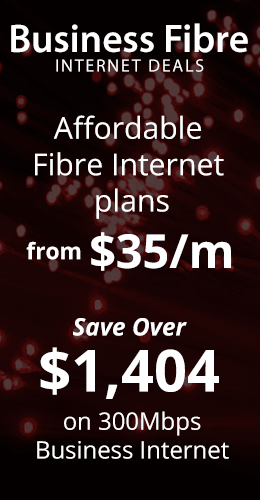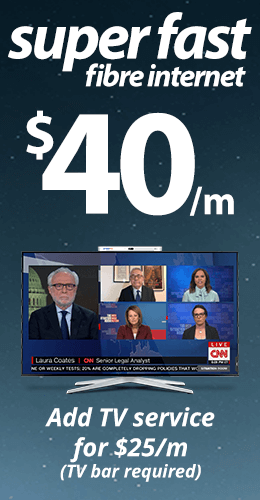
Fibre Internet, A Better Way to Connect

Fibre Internet, A Better Way to Connect
What is fibre internet?
Fibre internet is the fastest and most advanced connection available today to accessing the web. Light signals are transmitted through the glass cable in order to carry information to your device to anywhere in the world. Fibre internet is a better way to stay connected.
Better solutions generate better outcomes; that is why each new product and innovation are more likely to succeed and outdo their predecessors because it’s improved and made better.
The newer technology offers features that are far superior to DSL and cable. Speed is just one of the many factors.
Fibre internet makes web surfing enjoyable; thanks to fibre-optic glass cables, users surf the web without slowdowns or other interference.
Fibre optic cables transmit data as light pulses over long distances with little distortion or loss of information.
Fibre optic internet transfers data as light signals in thin cable made of glass or plastic fibre. Internet-related conversations are evergreen among those who follow technology news. New things come every second.
It would be helpful to have information on all forms of the internet. This type of internet connection is much faster and more reliable than other types, such as DSL or cable. Because of its high download and upload speeds, this internet type is often preferred over DSL or cable.
Comparison of fibre internet to other types
For a better understanding of your type of internet preferences, it is important to know and compare the other types as well. Once you understand the technology, it becomes clear why so many people note that fibre internet is a game changer.
You probably may wonder why fiber optic is better than the cable or DSL internet connections at transmitting data. A short answer would be that the type of line has an effect.
Fibre optic cable is capable of carrying light signals with very little loss and distortion; Copper wires distort and weaken the electrical signals they carry.
As the distance between your device and your internet service provider’s (ISP) center increases, latency, or a time lag on transmission of data through copper the worse the latency and possible distortion on that line will be.
The farther the cable is from its source, the worse the signal quality becomes. That is why DSL and cable internet are not as fast as fibre optic.
Therefore, a fibre-optic link carries data faster than one made of copper. This leads to shorter load times, less mashing (i.e., the repeated loading and unloading required when working with large files), and better-quality output. Your internet speed depends not only on the amount of bandwidth available, but also on how much data can be transmitted at certain speeds.
Fibre vs. DSL
Fibre-optic internet connection is 100 times faster than the copper wire which is definitely worth a try. DSL and cable internet use traditional copper wires to transmit voice, and their capacity for data transmission is limited.
Both DSL and cable internet got faster over time, because of this, it may not be easy to tell the difference between internet plans when you compare them.
While fibre optic internet connections are capable of delivering speeds up to 1 gigabit per second, DSL is generally only able to offer speeds averaging 6 Mbps. With fibre optic internet service, you can easily download movies and music, play multiple games in real-time—and adding extra devices connected to the internet won’t degrade your connection speed.
Although DSL is capable of performing some functions at its higher rate, it remains true that its connection is slower. For basic online activities such as sending and receiving email or downloading e-books or other documents, it can still be suitable.
Fibre-optic service is a more reliable form of internet access than DSL. There are a number of factors that can affect the speed at which your DSL connection operates, including power outages and distance from the internet service center.
Fibre optic is unaffected by electrical outages so your connection will run for a bit and won’t interfere with its connectivity.
Fibre internet connection is the clear winner. If you still have a DSL connection, consider fibre, it may be worth trying.
Fibre optic vs. cable internet
Cable internet use wire made of copper, and electricity is used to transmit data. Watching cable TV for many years is an example of this phenomenon.
Fibre optic Internet connections are the fastest of all; they can achieve speeds up to 10 gigabits per second and offer symmetrical upload/download rates. In the same situation, cable internet service tends to be slower.
Although cable internet is slower than fibre optic, it offers broadband service simultaneously and almost covers all the needs of small or medium-sized businesses. Compared with the DSL, broadband offers significantly faster speeds.
The download speed for cable internet is usually between 10 and 1 Gbps, depending on the provider. The upload speed varies from 3 to 50 Mbps as well.
When considering fibre optic vs. cable internet, fibre is often the better option due to its stability and performance capabilities.
Fibre gives you a dedicated line whereas cable is shared between many users.
This line prevents any delay in processing data and guarantees that your speed volume will not be slowed down.
Is this connection worth trying?
Fibre internet may cost more than cable, don’t be dismayed by the higher price -it’s well worth the investment. AEBC offers a variety of plans, so you can choose one that fits your requirements. Click here for more information.
If you need connectivity at multiple locations with different connection types, fibre to your main or home office and cable elsewhere can be a cost-effective solution.
One drawback of fibre optic is that it’s not widely available. Despite the fact that fibre-optic cables are so prevalent, there are still some places in which they have not yet been installed.
If you require a fibre optic connection, there is one option available: the telecommunications industry relies on fibre optics as its backbone and they are widely used in most markets.
If your business needs fast internet connection, fibre-optic cable might be the best solution. It seems costly, but the internet provider may be willing to negotiate installation fees based on your location and other factors.
You will need to call your internet provider and make all the necessary arrangements. Or call AEBC internet to see what internet connection is right for you at 866-286-0894.
How does it work?
Although most GB internet providers use a fibre-optic network, not all fibre connections are created equal. Depending on the area in which you live and other possible factors, access to FTTN, and FTTH can be different.
FTTN – Fibre To The Node
Fibre-to-the-node (FTTN) connections use fibre optic cables to carry data from a hub, located fairly close to your home. From this point onward, data is carried by coaxial wires.
FTTH – Fibre To The Home
A fibre to the home (FTTH) connection employs a single strand of fibre optical cable that connects your residence or business directly with an internet service provider. It’s also called as “fibre to the premises,” FTTH is the most reliable, highest bandwidth and is consistent when it comes to speed.
AEBC internet corporation offers FibreMax (FTTH) and FibreCore (FTTN) connections. Check their plans here.
For whom does fibre internet is most useful?
Fibre optic internet service is reasonably priced since it provides a high-speed internet connection which is definitely ideal for everyone and is a newer technology with greater reliability.
Even if you do not need 1,000Mbps to download speeds, getting a 100 Mbps fibre internet plan may result in fewer outages and faster overall speeds than you would with a 100Mbps cable or DSL connection.
The older version of the copper wire (DSL or cable) typically downloaded data at a higher rate than it could upload.
For example, if your internet connection speed is 300Mbps then you should be able to upload files at a rate of 300Mbps. Faster upload speeds make it easier for people to share large files or participate in many video calls.
How do I get fibre internet connection?
Fibre Internet may sound impressive and is not as widespread as its copper-wire counterpart, but companies are beginning to offer it in new cities.
Though fibre optic internet is mainly available in big provinces, AEBC internet corporation offer it elsewhere. To inquire if it’s available in your area, you may click here.
What is it used for?
Fibre optic Internet is a type of high-speed internet that’s perfect for more demanding online projects.
Video Conferencing
Fibre optic internet is particularly known for its lightning-fast speed. The most important for holding a successful online meeting or presentation are its high-quality audio and video.
TV Streaming
It boasts high-speed connections and minimal buffering to no buffering so users streaming in 4K or HD can enjoy smooth playback. Fibre internet provides download speeds that are ideal for large files such as games or movies or shows.
A 4 GB file will download in about 35 seconds at 1000Mbps, but it would take approximately an hour with typical DSL speeds.
Online Gaming
Fibre optic internet can send data at speeds that are up to 70% faster than those of other kinds of connections. It’s a good choice for users who experience streaming lags and especially gamers because it prevents delays in response time when playing online games.
Pros and cons of fibre internet
Fibre internet, ike any other product, has both advantages and disadvantages. For example, it would give users a fastest and reliable connection but with some of the drawbacks.
Advantages:
- Because fiber-optic cables use glass as their central conductor, they are less susceptible to interference and carry much higher volumes of data making it known for its reliability, superior performance and high speeds.
- Known as the fastest available internet speed, you can download and upload at a rate up to 1000Mbps.
- The cost of maintaining a fibre internet has decreased dramatically that many providers are offering it at an affordable price; over the last few years, fiber internet prices have become more competitive.
Disadvantages:
- Fibre internet is generally available in metro and suburban areas, but not usually in rural ones.
- Fibre-optic networks are more expensive to construct and maintain than other types of Internet connections, leading providers and customers to pay higher initial prices.
- Fibre-optic technology is newer, which means a provider may need to set up new lines—and professional installation is typically required.
Fibre connection is the best choice of all
While it is not the cheapest, it offers great value because its reliability and speed can be a valuable advantage over other types of internet connections.
Although fiber internet has many advantages, it does have one significant drawback: It is not available in all areas. If it’s available in your area, then you might want to consider getting fibre internet because of its speed and connection quality.
AEBC home internet service may be the right choice for you. They can have fibre brought directly to your home. You already know that’s the best way to get great speed, bandwidth and reliability. So, if you are ready to learn more about AEBC’s internet plans, click here. You can also click here to see if it’s available to your neighborhood.







